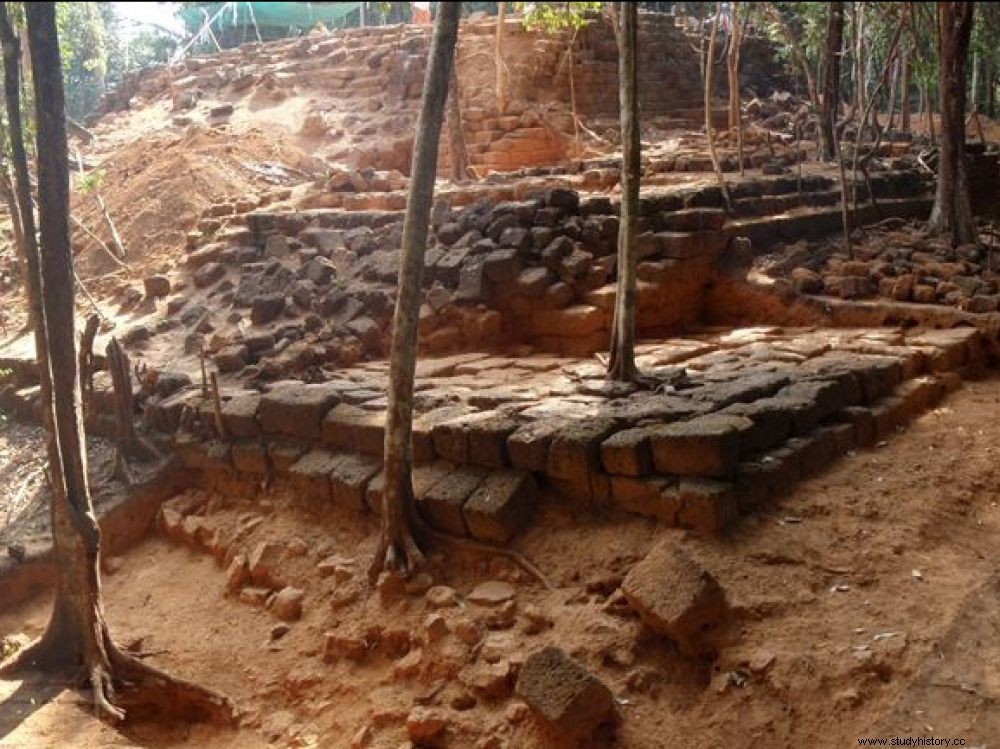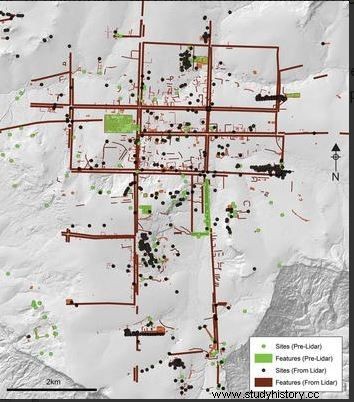An international team has just published the first complete survey, using the airborne laser technique, of the city of Mahendraparvata, one of the first Khmer capitals of the 9th century, founded by King Jayavarman II in Cambodia.

View of a mountain temple being cleared at the site of Mahendraparvata, Cambodia.
After seven years of work, a comprehensive study reveals the true extent of one of Cambodia's most important archaeological sites. It is on the Phnom Kulen plateau, about forty kilometers northeast of the famous Angkor site in Cambodia, listed as a UNESCO World Heritage Site, that epigraphic sources mention the existence of Mahendraparvata ("the mountain of the great Indra" ). This city, located in a mountainous region, was one of the first capitals of the Khmer Empire, this powerful kingdom which dominated a large part of mainland Southeast Asia between the 9th and 15th centuries AD. . However, despite its importance, it had never received the full attention of specialists. Until recently, this archaeological site, which is difficult to reach by taking chaotic roads, was buried under a devouring canopy, even if new cashew plantations (cashew trees) have gradually come to clear it up. Long forgotten, this city had also been occupied by the Khmer Rouge who had made it one of their strongholds when they occupied the region from the beginning of the 1970s to the end of the 1990s. Even today, the presence of anti-personnel mines makes exploration of this area dangerous. It is therefore by means of the technique of airborne laser scanning (laser) that archaeologists have traced the precise contours of this exceptional city. A remote sensing system which, from Guatemala to Mexico, has revolutionized in recent years the vision that specialists had of large-scale archaeological sites.
A first campaign was carried out in 2012, supplemented by a second laser scan carried out under the direction of Damian Evans of the École Française d'Extrême-Orient (EFEO) and their colleagues from the Cambodian authority of APSARA, as just published it in the magazine Antiquity.

Plan of the city of Mahendraparvata with its royal roads and its shrines and temples revealed by the passage of Lidar. © Jean-Baptiste Chevance et alii
"Unlike 2012 when we only had 30 km 2 covered, we now know the full extent of the ancient city of Mahendraparvata and its urban network, i.e. more than 40 to 50 km 2 !" , explains Jean-Baptiste Chevance, co-author of the study and responsible for the excavations. Joined by Sciences et Avenir, the French archaeologist from the Archeology &Development Foundation (ADF) was thus able to obtain a complete map of the royal city, whose organization is unprecedented. The city is in fact laid out according to a vast grid, the only known example of such urban planning in the region. In addition, thanks to the excavations carried out in the field under the direction of the French archaeologist, the researchers were able to identify hundreds of remains, including those of sanctuaries whose square earthen platforms correspond to the outline of temples. Specialists have also unearthed remains of the water distribution system.
"All of these elements confirm the existence of this first royal city at the beginning of the 9th century, during the reign of the sovereign Jayavarman II, continues Jean-Baptiste Chevance.Such an organization supposes the existence of a strong power but also of a planned vision of the Khmer city. This is a surprise, because we did not expect to find such characteristics". The study of this huge set is still in progress.
